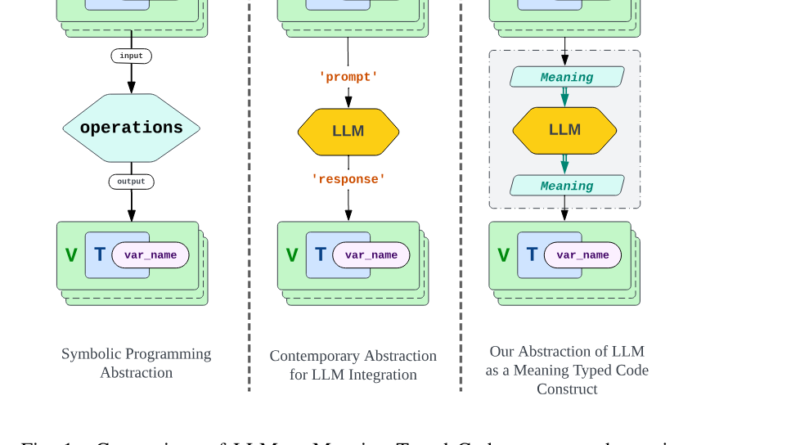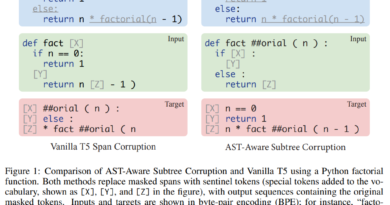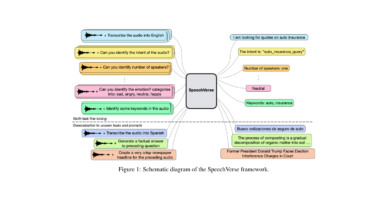Neurosymbolic Programming: The Next Step in AI-Driven Development
The field of artificial intelligence (AI) has been evolving rapidly over the past few years. From image recognition to natural language processing, AI has made significant strides in various domains. One particular area that has seen a revolution is programming, with the emergence of Neurosymbolic Programming bridging the gap between traditional programming and the power of AI.
The Rise of Generative AI Models
Generative AI models, particularly Large Language Models (LLMs), have gained immense popularity across different industries. These models have the ability to process text inputs and generate text outputs, which has opened up new possibilities in software development. As enterprises and startups increasingly integrate LLMs into their workflows, the future of programming is undergoing significant changes.
Symbolic Programming vs. Neurosymbolic Programming
Traditionally, programming has relied on symbolic code, where developers express logic for tasks or problem-solving using a set of predefined symbols. However, the rapid adoption of LLMs has sparked interest in a new paradigm known as Neurosymbolic Programming. This approach combines neural networks and traditional symbolic code to create sophisticated algorithms and applications.
Symbolic programming has dominated the programming landscape for decades. It involves writing code that operates directly on variables or typed values. In contrast, LLMs operate on text strings, which introduces a fundamental mismatch between LLM abstractions and conventional symbolic programming.
The Challenge of Prompt Engineering
One of the challenges in working with LLMs is prompt engineering, which involves constructing appropriate input prompts to generate desired outputs. Creating effective prompts can be complex and tedious, as developers need to manually decide the type of prompts and the information to include. This process can reduce code readability and maintainability.
To address this challenge, several open-source libraries and research efforts have emerged, aiming to simplify prompt construction and facilitate LLM programming. Examples of such tools include LangChain, Guidance, LMQL, and SGLang. These tools help developers generate prompts more easily, but they still require manual input and decision-making.
Introducing Meaning-type Transformations
To address the complexity of LLM programming, a new approach proposes treating LLMs as native code constructs and providing syntax support at the programming language level. This approach introduces a new type of “meaning” to serve as the abstraction for LLM interactions. “Meaning” refers to the semantic purpose behind the symbolic data (strings) used as LLM inputs and outputs.
The idea is to automate the process of translating conventional code constructs and meanings, termed Meaning-type Transformations (MTT), to reduce developer complexity. By introducing a novel language feature called Semantic Strings (semstrings), developers can annotate existing code constructs with additional context. Semstrings provide the necessary context and information for the seamless integration of LLMs, facilitating Automatic Meaning-type Transformations (A-MTT).
Streamlining Symbolic Code Operations
With A-MTT and semstrings, developers can streamline common symbolic code operations when working with LLMs. For example, instantiating custom type objects, standalone function calls, and class member methods can be made more efficient and maintainable with these new abstractions and language features.
The introduction of A-MTT and semstrings represents a significant contribution to the programming paradigm. It enables more efficient and maintainable integration of LLMs into conventional symbolic programming, making it easier for developers to leverage the power of generative AI models.
The Future of Programming
The AI-powered code revolution, bridging traditional and Neurosymbolic Programming, holds immense potential for the future of programming. As LLMs continue to advance and become more accessible, developers will have the opportunity to create innovative applications with the combination of neural networks and symbolic code.
The integration of AI into programming opens up new possibilities for automating complex tasks, enhancing problem-solving capabilities, and improving the overall efficiency of software development. Developers can leverage the power of LLMs to generate code snippets, assist in debugging, and even provide intelligent suggestions for code improvements.
In the near future, we can expect to see more tools, frameworks, and languages built specifically for Neurosymbolic Programming. These advancements will further simplify the process of working with LLMs and bridge the gap between traditional programming and the power of AI.
Conclusion
The AI-powered code revolution is transforming the way we approach programming. With the rise of generative AI models and the emergence of Neurosymbolic Programming, developers have new tools and techniques at their disposal to create more powerful and intelligent applications.
By combining neural networks and traditional symbolic code, developers can leverage the strengths of both approaches and overcome the limitations of each. Prompt engineering, one of the challenges in working with LLMs, can be simplified through the use of tools and libraries that automate the process of generating appropriate prompts.
With the introduction of meaning-type transformations and semantic strings, developers can streamline common symbolic code operations and make the integration of LLMs more efficient and maintainable.
The future of programming holds exciting possibilities as AI continues to advance. Neurosymbolic Programming represents a bridge between traditional programming and the power of AI, bringing us closer to a new era of software development.
Check out the Paper. All credit for this research goes to the researchers of this project. Also, don’t forget to follow us on LinkedIn. Do join our active AI community on Discord.
Explore 3600+ latest AI tools at AI Toolhouse 🚀.
If you like our work, you will love our Newsletter 📰




